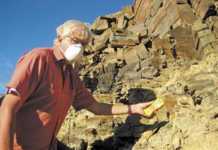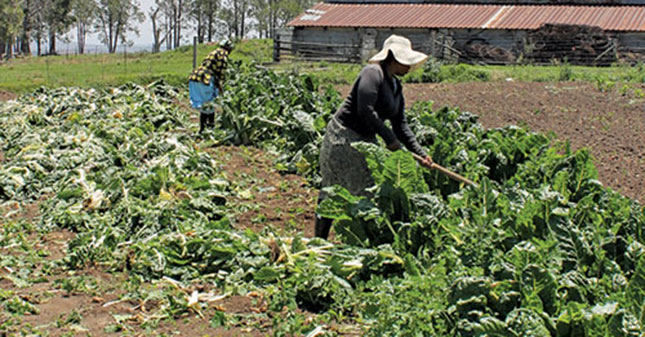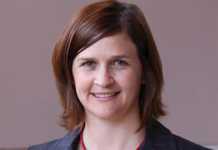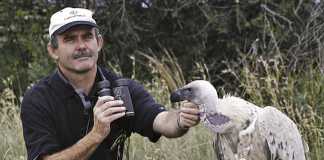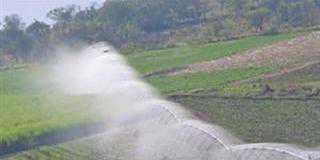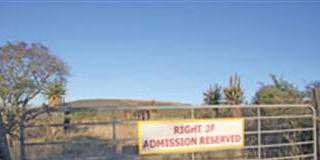Veterinary vacancies at state level have left a void in South Africa that impacts on the effective implementation of animal disease control and risk mitigation measures.
With an estimated 20 vacant posts at national level, and 104 at provincial, this equates to a 37% vacancy rate. Dean of the Faculty of Veterinary Science at the University of Pretoria, Prof Gerry Swan, talks to Robyn Joubert.
Is there a shortage of veterinarians in SA (private and state vets)?
Yes. The international norm is between 200 and 400 veterinarians per million of the population – yet currently there are about 60 to 70 veterinarians per million in South Africa.
This could be addressed by increasing the number of veterinarians that are trained but also through the development of the veterinary science team consisting of veterinarians and veterinary paraprofessionals, such as animal health technicians, veterinary technologists and veterinary nurses.
By World Organisation for Animal Health (OIE) standards, there should be one veterinarian per 60 000 livestock units (pigs, cattle, sheep and goats, but excluding chickens) in disease control.
Accordingly, we should have about 650 veterinarians in this field but South Africa doesn’t even have a third of this number at its disposal in state veterinary services but could be supplemented by an effective partnership between state veterinarians and rural practioners.
What is the reason for the shortage in state veterinary services?
The shortage of vets is a general trend, but is more pertinent and visible in state veterinary services, in the field of production animals (specifically in rural areas), in academia and in research.
Among other things, the reasons for the shortage relate to perceptions about the general conditions of service in this field.
There is no shortage in small and private practices that specialise in dogs and cats, although these groups are not over-represented either. This is probably due to financial reasons with a view to a better standard of living.
Awareness about state veterinary services and the veterinary profession in general can stimulate interest among prospective students and graduates.
The Faculty of Veterinary Science (Onderstepoort) has been criticised for training too many female vets, who tend to prefer working in urban areas and not in large animal practices in rural areas. What is the ratio of male: female students at Onderstepoort?
Currently, the ratio in South Africa among registered veterinarians is 65% men and 35% women.
However, the opposite trend exists among current students where the ratio is between 67% to 71% women in the various years of study and the rest is made up of men.
Based on the current statistics of graduates entering the field, few females compared to males are interested in working in rural practices that mainly deal with large animals.
What steps is Onderstepoort taking to recruit more students?
A few years ago, the faculty initiated an awareness strategy for the veterinary profession in general, but also specifically aimed at the previously disadvantaged.
The faculty has specific initiatives to provide effective support in the recruitment of students, specifically from previously disadvantaged communities. This includes school visits by the dean and other role players to make students aware of the role of veterinary science, our courses, admission requirements and bursaries.
Further initiatives also include community engagement, expos, career days and the use of promotional material, publications and publicity.
We have reviewed our selection criteria for matriculants who choose veterinary science as a field of study. We take into consideration access, diversity, excellence, equity, gender, and geographic distribution in addition to academic performance.
We now offer more comprehensive support for students until they graduate. The university has created opportunities for specific experts to be appointed to support students. The role players have also agreed to identify specific mentors to assist the students throughout the training programme.
A further important initiative was the recent creation of a senior veterinary science recruitment post in the University of Pretoria’s client service centre to co-ordinate the faculty’s recruitment activities. This is the first post of its kind at the university.
Tell us about your shorter vet course.
We have developed and introduced a new core-elective six-year single degree to replace the longer seven-year degree programme in 2011. The core-elective programme is an internationally acknowledged approach during which all candidates will complete a core curriculum over four-and-a-half-years after which they complete the didactic component of a chosen elective over the remaining four months of the fifth year.
They will then conclude their degree with 12 months of experiential training in the core and chosen elective components. Only the first year of study will take place at the Hatfield campus of the University of Pretoria, and the rest of the course will be completed at the Onderstepoort campus.
We expect that the shortened course will lead to more students from previously disadvantaged communities applying.
Tell us about the proposal to introduce community service for vets.
The proposal has already been agreed upon in principle by all role players, which include government and the South African Veterinary Council (SAVC). This is an important initiative that will assist in alleviating the pressure on state veterinarians and also expose the graduates to state veterinary services.
The faculty will prepare newly qualified students for this compulsory community service. This will, in essence, be conducted through the work of the new chair for Primary Animal Health Care at the faculty, headed by Dr Rebone Moerane who is also the current president of SAVC.
At this time we can’t confirm when compulsory community service will be introduced.
Is there sufficient interest among students to study veterinary science?
Currently, there is an unprecedented interest in veterinary science among all races and we will continue to promote veterinary science, specifically with the aim of ultimately providing the veterinary training needs of the country.
Contact Prof Gerry Swan on 012 529 8201.
Caption:
The ratio of male to female students at Onderstepoort is between 67% to 71% women in the various years of study and the rest is made up of men.
COURTESY OF THE FACULTY OF VETERINARY SCIENCE, UNIVERSITY OF PRETORIA

